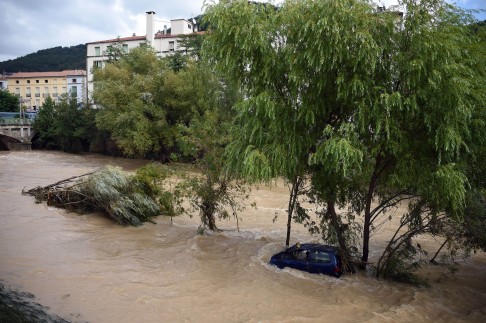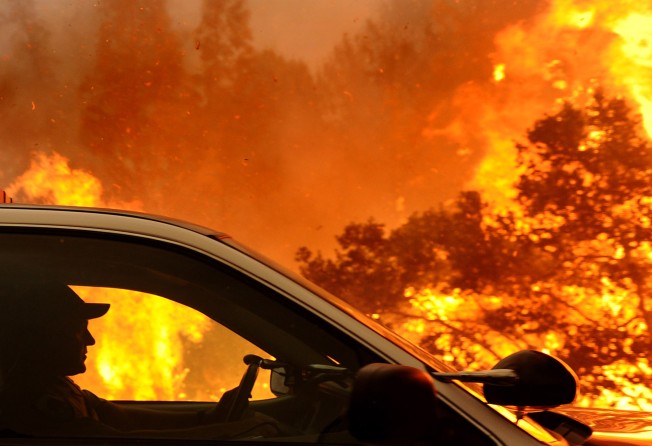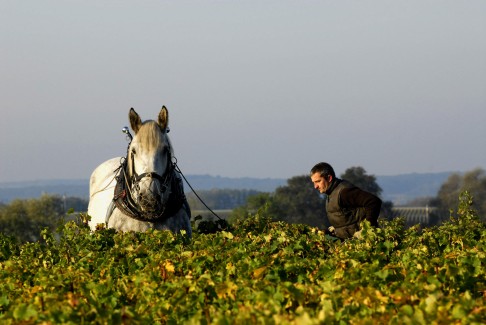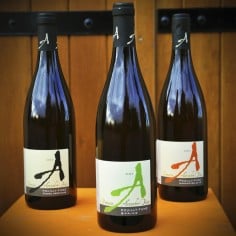
Fickle nature robs winemakers of what looked a great 2015 harvest
Fire, floods and a tornado - in France - hit some vineyards just before harvesting in what's predicted to be a vintage year. Champagne, Burgundy and Bordeaux escaped unscathed

It's the time of the year when winemakers need a steady hand and steadier nerves. It's also when when wine drinkers start to get an idea of what we should be looking out for over the next couple of years, when grapes harvested in 2015 make their way into bottles and onto wine lists and shelves.
Autumn 2015 has seen its share of drama for those bringing in their grapes. In California, wildfires raged close to the Napa Valley and Sonoma County. Although most wineries there escaped direct damage, vintners were not as lucky in nearby Lake County, where the blaze destroyed Shed Horn Cellars and damaged several more. Even in Napa, the harvest was interrupted by evacuation orders and road closures stopped pickers getting into the area, while the effect of smoke taint (with its resulting accumulation of guaiacol and eugenol compounds) on the grapes is still being assessed.

In France, there has been flooding in the Hérault department which destroyed whole swathes of vineyards - with winemaker Jerôme Brol in the commune of Le Puech estimating to have lost a third of his 14 hectares of vines, equivalent to 80 tonnes of grapes. There was even a tornado reported in the Charente-Maritime region of southwest France, where Cognac is made, with an estimated loss of 30 hectares of vines. Chablis saw a burst of pre-harvest hail in the first days of September, savagely slicing off some of those just-ripe grapes.
In all of these cases, the devastation was made worse by the fact that 2015 looks set to be a great vintage. Almost right from the start, the growing season was kind. In Burgundy, flowering was quick and even, taking only 10 days from start to finish, according to most people I spoke to. Both Burgundy and Bordeaux then had a sustained heatwave in July and early August that concentrated sugars in the grapes and raised expectations.
Up in northern France, the heatwave means we are certain to get a good crop of vintage champagnes - among them the zero dosage (no added sugar) Louis Roederer Brut Nature, which is only made in years when the chardonnay, pinot noir and pinot meunier grapes have an exceptional level of natural ripeness.

But even in regions that have enjoyed a successful growing season, some stresses have come out of the blue - and for one winemaker at least, it isn't nature that is ruining his harvest. Alexandre Bain, a leading proponent of biodynamic and natural winemaking in the Pouilly-Fumé region of the Loire, is facing another type of drama altogether.

You might have come across the wines from Domaine Alexandre Bain, with their large, eye-catching "A" scrawled across the label. They are featured on the wine list of 17 of the 50 Best Restaurants of the world, including Noma in Copenhagen and L'Arpège in Paris. Not bad for a winemaker who began only seven years ago, when he was 30. Within a few years, his wines were being hailed for playing their part in the "natural wine" movement - certified biodynamic and organic, using natural yeasts, without fertilisers or pesticides, no sugar or sulphur added during winemaking, and long ageing, even for white wines. All of this has caught the attention of sommeliers and importers. But it has also made the wines stand out from many more classic Pouilly-Fumé bottles, where the sauvignon blanc is expected to be crisp, fresh and mineral. Bain harvests his grapes late, and the yields are often half that of his neighbours, meaning the flavours have become richer, with honeyed edges. Several times over the past few years Bain has struggled to be granted the right to use AOC Pouilly-Fumé on his label. And a few weeks ago, that right was revoked entirely.
Not that the taste of the wine was, officially at least, the cause of the drama. Instead, the decision was made over a missed deadline for a technical inspection of the vineyard and cellar set by the national body that governs winemaking rules in France (INAO). Bain says the local agency appointed by INAO to carry out the inspection was the first to cancel the visit in late August before he, in turn, had to postpone the rescheduled one because harvesting was under way.
The next move, according to Bain, was a letter from the INAO, received just a few days ago, officially ("and definitively") withdrawing his right to use the appellation.
"So now here I am, at the beginning of harvesting what looks set to be an excellent vintage, and I will only be able to label my bottles as table wines, Vin de France. The consequences of a missed appointment seem to far outweigh the fault. It is hard not to draw the conclusion that I am not only fighting the INAO, but an ideology over how wines are made," he says.
Jane Anson is a Bordeaux-based wine writer